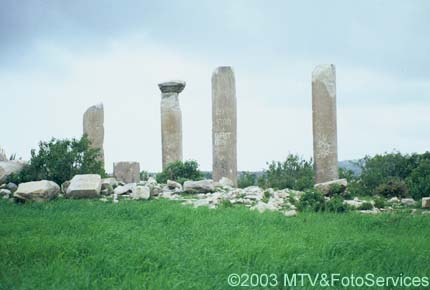
The favourite topic of conversation among regional historians is whether
or not the ruins of Qohaito, 120km (74mi) south of Asmera, were once the
inhabited walls of the ancient town of Koloe, a commercially important
place during the good times of the great Aksumite kingdom. Even if it
wasn't, the city's impressively large remains - covering an area of 2.5km
(1.5mi) by 15km (9mi) - are testament to its once-great stature. Though
only about 20% of the ruins have been excavated, it'll still take you
most of a day to pick your way through the digging's main sights.
The four columns and assorted rubble of the Temple of Mariam Wakiro are thought to have begun life intact as an early Christian church and are surrounded by the dusty remains of a half-dozen other temples. To the north of here is an underground, sandstone-hewn Egyptian Tomb, so named not because it's Egyptian origin has been conclusively proven but because of the tomb's impressive dimensions.